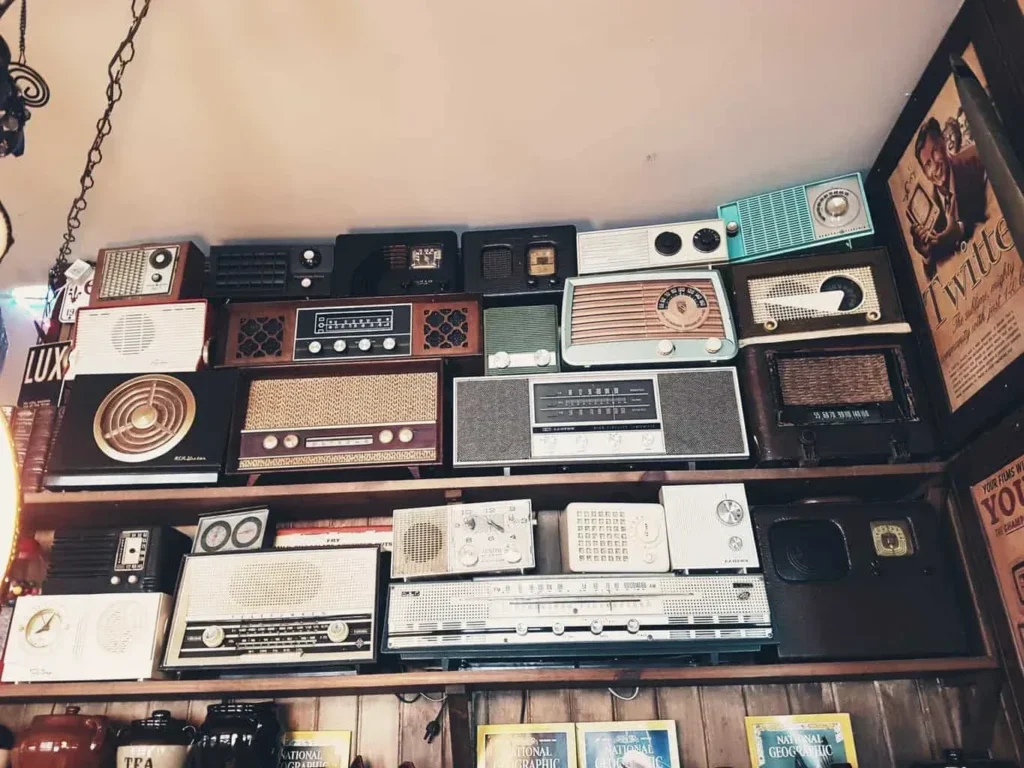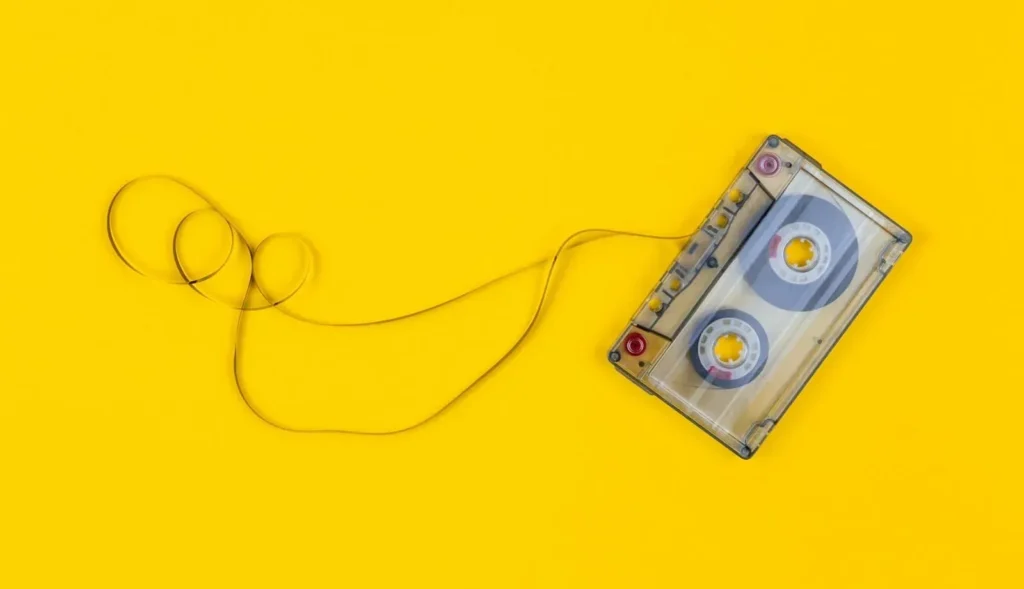Do you ever find yourself drawn to things from the past? There’s just something nostalgic and captivating about all things retro, isn’t there? Whether it’s the vibrant colors, the vintage design, or the classic tunes, there’s an undeniable appeal to everything old-fashioned. In this article, we’ll explore the reasons why retro has a mysterious power to transport us back in time and bring a sense of joy and comfort like no other. So, put on your favorite vintage record and let’s dive into the world of all things retro!
Defining Retro

This image is property of images.unsplash.com.
Understanding the concept of retro
When we talk about retro, we’re referring to a style or trend that looks to the past for inspiration. It is a nostalgic movement that aims to capture the essence of a bygone era and bring it into the present. Retro is all about taking elements from the past and reinterpreting them in a contemporary context.
Historical background of retro
The roots of retro can be traced back to the early 20th century when people started to look back at previous decades for inspiration. This resurgence of interest in the past was fueled by a desire to break away from the modern and mass-produced aesthetics of the time. It was a reaction to the rapid industrialization and the quest for something authentic and unique.
Various interpretations of retro
Retro can have different meanings for different people. For some, it represents a specific era, like the 1950s or 1980s, while for others, it is more about a general vintage aesthetic. Some interpret retro as a way to honor and pay homage to the past, while others see it as a form of escapism or nostalgia. The versatility of retro allows individuals to adapt it to their own personal tastes and preferences.
Retro in Pop-Culture
Retro aesthetics in movies, TV, and music
Retro aesthetics are commonly seen in movies, TV shows, and music. Filmmakers, producers, and musicians often draw inspiration from past decades to create a sense of nostalgia and transport the audience back in time. Whether it’s the vibrant colors and bold patterns of the 1970s or the neon lights and synths of the 1980s, retro aesthetics in pop-culture evoke a sense of familiarity and longing for a simpler time.
Retro themes in literature
Literature also embraces retro themes, allowing readers to experience different eras through the pages of a book. Retro-inspired novels can transport us to a different time and place, whether it’s a story set in the roaring twenties or a tale set against the backdrop of the psychedelic sixties. Retro themes in literature offer a unique way to explore history and its impact on society.
Key influencers of retro in pop culture
Various influential figures have played a significant role in shaping retro in pop culture. Artists like Andy Warhol, with his iconic pop art, and filmmakers such as Quentin Tarantino, known for his modern take on vintage genres, have helped popularize the retro aesthetic. Additionally, celebrities and fashion icons who embrace retro styles and incorporate them into their public personas have also contributed to the influence of retro in pop culture.
Retro in Fashion
Retro inspired clothing styles
Retro fashion draws inspiration from the clothing styles of previous decades. From the sleek and elegant silhouettes of the 1950s to the bold and expressive fashion of the 1980s, retro-inspired clothing allows individuals to express their unique sense of style while paying homage to the past. Vintage stores and online platforms have made it easier than ever to find retro-inspired garments that capture the essence of a certain era.
Influential decades for retro fashion
While retro fashion can be inspired by any past decade, there are a few notable periods that have had a significant impact on fashion trends. The 1920s, with its glamorous flapper dresses and art deco influences, and the 1960s, known for its mod style and psychedelic prints, are two such influential decades. The 1970s and 1980s have also left a lasting impression on retro fashion, with their disco-inspired looks and vibrant colors.
Retro fashion revivals
Retro fashion has experienced numerous revivals throughout history. These revivals often occur when a certain retro style or trend becomes popular again, leading designers and retailers to incorporate vintage-inspired elements into their collections. For example, the resurgence of 1950s retro fashion in the 1980s with the rise of rockabilly culture showcased the cyclical nature of retro fashion. These revivals allow individuals to embrace the nostalgia and timeless appeal of retro fashion while infusing it with a modern twist.
Retro in Design
Retro elements in interior design
Retro design elements can transform a space, bringing a sense of nostalgia and charm into our homes. Eames-style chairs, bold geometric patterns, and mid-century modern furniture are just a few examples of retro elements commonly used in interior design. These elements not only add visual interest but also create a warm and inviting atmosphere that harkens back to a different time.
Influence of retro on graphic design
Retro aesthetics have a significant influence on graphic design. From vintage-inspired typography to retro color palettes, designers often look to the past for inspiration to create visually striking and memorable designs. Retro graphics can evoke a sense of nostalgia, often appealing to individuals who appreciate the aesthetics of a particular era or those who want to stand out from the crowd with a unique and retro-inspired design.
Retro in architectural designs
Architects have also embraced retro influences in their designs, adding elements from the past to create distinctive buildings and structures. Retro-inspired architecture combines modern functionality with classic design features, such as art deco details or mid-century modern lines. This blend of old and new creates a visual appeal that is both familiar and refreshing.
Art of Nostalgia

This image is property of images.unsplash.com.
Role of nostalgia in fueling the retro trend
Nostalgia plays a significant role in fueling the retro trend. As humans, we often long for what we perceive as simpler or happier times. The familiarity and comfort associated with retro aesthetics and design elements tap into our emotional connection to the past, leading us to embrace and appreciate retro trends.
Psychological effects of nostalgia
Nostalgia can have various psychological effects on individuals. It has been shown to boost mood, reduce stress, and increase feelings of social connectedness. When we engage with retro items or experiences, we tap into our memories and evoke positive emotions associated with the past. This psychological impact contributes to the appeal of retro and its ability to provide comfort and enjoyment.
Nostalgia and identity formation
Nostalgia also plays a role in identity formation. For many, retro items and experiences can evoke a sense of belonging or identity. Whether it’s connecting with their cultural heritage or associating with a particular subculture or movement, retro can help individuals shape and express their identity in a meaningful way. The ability to use retro elements to create a personal narrative adds depth and significance to the overall appeal of retro.
Retro and Comfort
Association of retro with comfort and familiarity
Retro is often associated with feelings of comfort and familiarity. The aesthetics, design, and sounds of the past elicit a sense of stability and reassurance. The familiarity of retro elements can create a comforting and safe environment, reminding us of a time when things seemed simpler and more predictable.
How nostalgia can bring comfort
Nostalgia is comforting because it allows us to reminisce about positive memories from our past. It creates a sense of continuity and reminds us of who we once were. Nostalgic experiences engage our senses and transport us back to a time and place that feels safe and secure. This ability of nostalgia to bring comfort is one of the reasons why retro trends continue to resonate with individuals across generations.
Why people gravitate towards familiar things
Humans have a natural inclination towards familiarity. Familiarity is comforting and brings a sense of security in an ever-changing world. We tend to gravitate towards the known and familiar because it represents a sense of control and predictability. Retro trends tap into this innate human desire for the familiar, providing a sense of stability and grounding in our fast-paced modern lives.
Unique Characteristics of Retro

This image is property of images.unsplash.com.
Distinctive features of retro
One of the distinctive features of retro is its ability to transport us to a specific time and place. Retro design, fashion, and aesthetics often have a characteristic visual language that defines them. Whether it’s the pastel colors and chrome accents of the 1950s or the bold neon signs and geometric patterns of the 1980s, these visual cues instantly evoke the feeling of a particular era.
Why retro stands out
Retro stands out because it brings something different to the table. In a world saturated with modern designs and trends, retro offers a refreshing and unique perspective. Its ability to blend past and present, creating a fusion of old and new, allows retro to stand out and capture our attention.
Qualities that make retro appealing
Retro’s appeal lies in its ability to connect us with our roots and evoke a sense of nostalgia. It offers a departure from the ordinary, allowing individuals to express their individuality and personal style. The timeless nature of retro also contributes to its appeal, as it continues to inspire and influence contemporary culture while remaining true to its historical origins.
Retro in Technology
Retro game consoles and software
Retro game consoles and software have experienced a resurgence in recent years. Nostalgic gamers have sought out classic gaming consoles like the Nintendo Entertainment System (NES) or Sega Genesis, wanting to experience the games of their childhood. The popularity of retro gaming has led to the re-release of classic games and the development of new games that embrace the pixelated graphics and simple gameplay of the past.
The return of the vinyl and cassette tapes
Vinyl records and cassette tapes, once thought to be outdated technologies, have made a surprising comeback. Audiophiles and music enthusiasts have embraced the warm, analog sound of vinyl records and the nostalgic appeal of cassette tapes. The physicality of these formats, with their album artwork and tangible presence, adds a level of engagement that digital music often lacks.
How retro tech is being modernized
Retro technology has found a way to coexist with modern advances. Companies have released updated versions of classic game consoles that combine vintage aesthetics with modern features and capabilities. Additionally, retro-inspired technology, such as typewriters and instant cameras, has gained popularity among those who appreciate the simplicity and tactile experience of analog devices.
Critiques of Retro
Common criticisms of living in the past
One of the main criticisms of retro is the notion of living in the past. Critics argue that excessively embracing retro trends can hinder progress and hold us back from embracing innovation and advancements in design, technology, and culture. They argue that constantly looking to the past prevents us from fully experiencing and appreciating the present.
Is retro just a trend?
Some view retro as nothing more than a passing trend, one that will eventually be replaced by the next big thing. Critics argue that retro is often driven by nostalgia and a desire for comfort, but these trends can fade as societal and cultural preferences change. However, retro has proven its staying power and ability to evolve over time, suggesting that it is more than just a fleeting trend.
The debate over authenticity of retro
Another point of contention surrounding retro is the debate over its authenticity. Critics argue that retro-inspired items and experiences are manufactured and lack the genuine history and context of the original eras they draw inspiration from. However, proponents of retro argue that authenticity is subjective and that the reinterpretation of retro elements allows for creativity and innovation while still capturing the spirit of the past.
Future of Retro
How retro will evolve over time
Retro will continue to evolve as new generations take inspiration from different eras and reinterpret them in their own unique ways. As time passes, the definition of retro will expand to include more recent decades. The cyclical nature of trends suggests that styles and aesthetics from the 1990s and early 2000s may soon find their place in the retro movement.
Predicting future retro trends
Predicting future retro trends is challenging, as cultural shifts and societal changes can greatly influence our perception of the past. However, it is likely that as technology advances, retro trends may incorporate elements of modern aesthetics and digital influences. The future of retro may also see a greater focus on sustainability and the repurposing of vintage and second-hand items.
Impact of modern culture on future retro styles
Modern culture will undoubtedly play a role in shaping future retro styles. As we continue to navigate the digital age and the rapid pace of technological advancements, our relationship with the past will inevitably be influenced. Future retro styles may reflect the fusion of digital and analog aesthetics, celebrating the past while embracing the possibilities of the future.
In conclusion, retro is a multifaceted trend that spans across various aspects of culture and design. From pop culture to fashion, interior design to technology, retro continues to captivate and inspire. Its ability to evoke nostalgia, provide comfort, and offer a unique visual appeal ensures that retro will remain a prominent influence on our lives for years to come. As we move forward, retro will continue to evolve and adapt, reflecting our ever-changing relationship with the past and our longing for the familiar.

